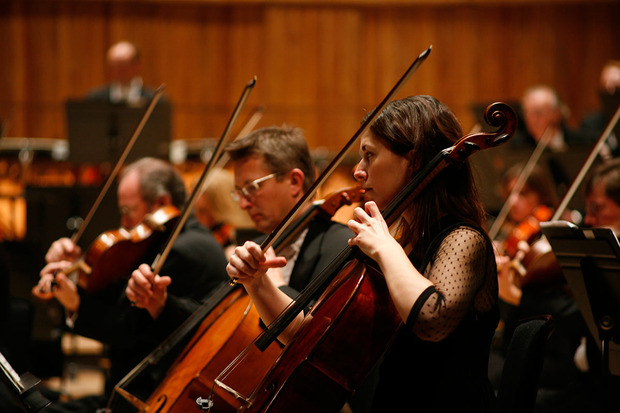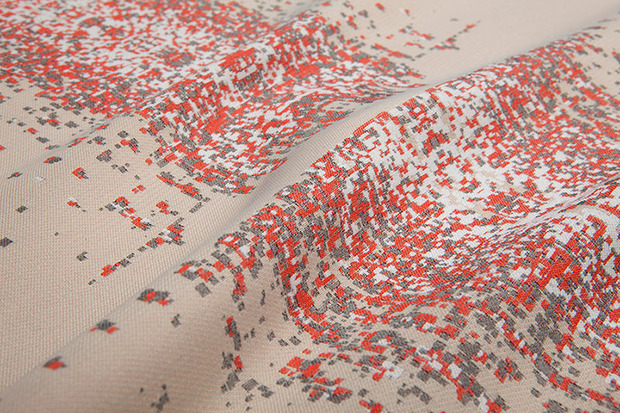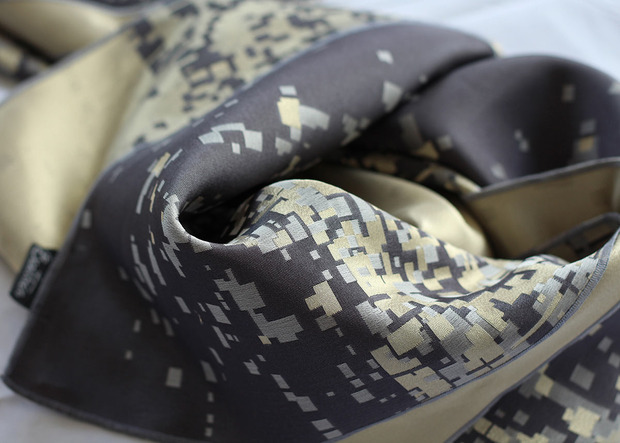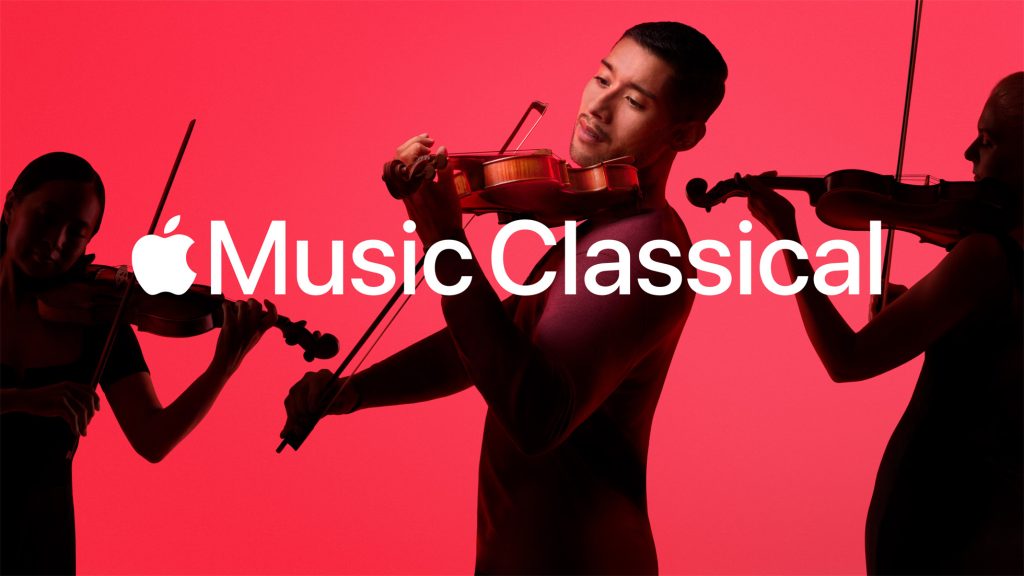BeatWoven Translates Music into Textiles
The London-based studio analyzes music through a custom software program to produce tangible visual patterns


By the time he passed away in 1943, Russian pianist and composer Sergei Rachmaninoff had left a legacy: one that penetrated beyond the realm of classical music, and infiltrated the lives of the audience and the works of other artists. Featured in Ayn Rand’s “The Fountainhead,” a wide range of films and even being sampled by the Beastie Boys, Rachmaninoff’s Romantic-era compositions have influenced artists and have been re-interpreted in their works—but this might be the first time his Piano Concerto No. 2 has been woven into textiles.

As a part of London Philharmonic Orchestra’s year-long festival, Rachmaninoff: Inside Out, at Southbank Centre, Nadia-Anne Ricketts was commissioned to create a textile piece for the Royal Festival Hall. Not just any old art piece, but an interpretation of Piano Concerto No. 2 used within David Lean’s 1945 film “Brief Encounter” (which was screened at the Hall accompanied by a newly commissioned orchestral soundtrack). At her studio BeatWoven, the textile designer has a bespoke audio software program that translates the played music into visual patterns, using pixels especially for weaving. “Similar to that of a very granulated, broken down sound wave, it inspects and discovers the patterns happening within the sound wave.” Ricketts tells CH. For the commissioned piece, she started by playing the Rachmaninoff concerto over and over through the software to analyze and become familiar with the patterns. Though the basic color palette was determined by the interior design of the Royal Festival Hall, where it will be installed, Ricketts does extensive research for each song, including the artist, genre, era and story behind its composition, to ultimately choose color combinations and yarns.

Ricketts recalls the grueling preparation process: “For the Rachmaninoff piece, it was a challenge as I was designing with in the parameters of the colors of the interior space, as well as the film ‘Brief Encounter’ and Rachmaninoff Piano Concerto No. 2, I felt I needed to encapsulate it all and was challenged by the contrast of the austerity of the film, and the huge amounts of emotion in the music. I therefore chose an orange-toned red; a poppy silk as the main patterned color with a steel yarn and an antique copper to help represent the multitude of steam engine scenes in the movie. I mixed these with classic black and white wool due to its era of 1945, and granite grey silks. I took the pattern created by the audio, edited it and prepared it ready for weaving.”
From her experience, Ricketts notes that visually, classical music and electronic music and jazz music make noticeably different patterns. “There is more background space on classical music. House music, or electronic music, is more full-on in terms of patterns, sometimes creating some fantastic shapes due to the synthesizers. The bass line and rhythm tend to be more obvious, constant and repetitive, therefore creating a full pattern with lots of shapes filling the void. Jazz music I have found to make the sweetest patterns due to the trumpets!”
Shop Rachmaninoff in scarf, cushion or art form by visiting Southbank Centre’s online shop, and view the rest of the festival’s schedule (running until April 2015) online.
Image of London Philharmonic orchestra courtesy of Benjamin Ealove, all other images courtesy of BeatWoven












